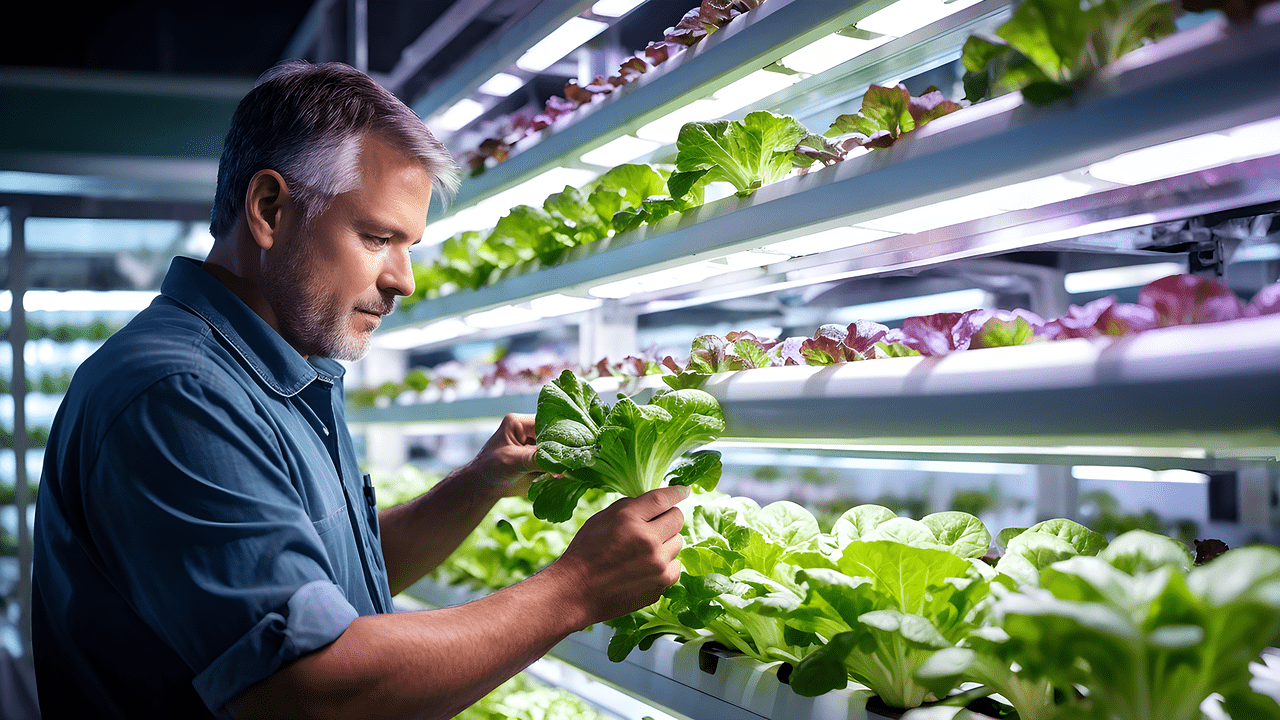Welcome to our discussion on “What Is Regenerative Agriculture?” In this article, we will immerse ourselves in the innovative world of regenerative farming practices that not only restore but also enhance the health of our soils, ecosystems, and communities. By diving into the principles and techniques that define this holistic approach, we aim to inspire a deeper connection to the land and promote sustainable farming methods that benefit both us and our planet. Together, let’s explore how regenerative agriculture challenges conventional practices and paves the way for a more resilient and nourishing food system. Have you ever wondered what regenerative agriculture is? This question leads us to a fascinating and increasingly important topic that holds the potential to create a more sustainable future for our planet. In this article, we’ll explore the world of regenerative agriculture, delving into its principles, benefits, practices, challenges, and future potential. So let’s embark on this enlightening journey together.
Introduction to Regenerative Agriculture
Regenerative agriculture is more than just a buzzword. It’s a holistic agricultural practice that focuses on revitalizing and enhancing the health of the land, ecosystems, and communities. Unlike traditional agriculture, which often depletes soil and environmental health, regenerative agriculture aims to restore and sustain it.
What Sets Regenerative Agriculture Apart?
Traditional farming practices revolve around maximizing yield, often at the expense of the environment. In contrast, regenerative agriculture is characterized by its commitment to building and maintaining ecosystem health. It’s a cyclical process where farming activities aim to give back to the land rather than just taking from it.
Historical Context
Regenerative agriculture isn’t entirely new. Many indigenous cultures have practiced forms of land stewardship for centuries. However, in recent years, it has gained renewed interest as farmers, scientists, and policymakers look for solutions to pressing environmental issues such as climate change, soil degradation, and biodiversity loss.
Core Principles of Regenerative Agriculture
Understanding the core principles of regenerative agriculture is essential. These principles provide the foundation for the practices and techniques employed in this farming approach.
Soil Health
Soil health is the cornerstone of regenerative agriculture. Healthy soil is teeming with life, including microorganisms that are crucial for nutrient cycling. Practices like composting, cover cropping, and reduced tillage help to enhance soil structure and fertility.
Biodiversity
Biodiversity is essential for ecosystem resilience. Regenerative agriculture promotes plant and animal diversity through methods like crop rotation, polycultures, and agroforestry. This diversity creates a more balanced and sustainable farming ecosystem.
Water Management
Effective water management is critical. Techniques such as rainwater harvesting, drip irrigation, and maintaining vegetation cover help to optimize water use, prevent erosion, and recharge groundwater supplies.
Ecosystem Synergy
In regenerative agriculture, there is a focus on the synergy between various components of the ecosystem. By fostering natural relationships, such as those between plants and pollinators or predators and pests, the system becomes more self-sustaining.

Key Practices in Regenerative Agriculture
Now that we have a grasp on the core principles, let’s delve into the key practices that bring these principles to life.
Cover Cropping
Cover crops, such as legumes and grasses, are planted to cover the soil rather than for harvest. They help prevent erosion, improve soil fertility, and manage water retention.
- Benefits: Reduces soil erosion, improves soil structure, adds organic matter, and enhances nutrient cycling.
Reduced Tillage
Minimal or no-till farming practices are employed to preserve soil structure and health. Tillage can disrupt soil microorganisms and lead to erosion.
- Benefits: Maintains soil structure, reduces erosion, preserves soil moisture, and improves carbon sequestration.
Composting
Composting organic waste into nutrient-rich soil amendments adds organic matter and beneficial microorganisms back into the soil.
- Benefits: Increases soil fertility, improves soil structure, and enhances microbial activity.
Agroforestry
Agroforestry integrates trees and shrubs into agricultural systems. This practice enhances biodiversity and provides additional sources of income for farmers.
- Benefits: Enhances biodiversity, sequesters carbon, prevents erosion, and provides habitat for wildlife.
Diverse Crop Rotations and Polycultures
Growing different crops in the same field over time (crop rotation) or simultaneously (polycultures) can disrupt pest cycles and improve soil health.
- Benefits: Disrupts pest and disease cycles, improves soil nutrient balance, and increases biodiversity.
Holistic Planned Grazing
Rotational grazing mimics the patterns of migrating herds, which can improve pasture health and soil fertility.
- Benefits: Prevents overgrazing, enhances pasture productivity, and improves soil carbon storage.
Benefits of Regenerative Agriculture
The benefits of regenerative agriculture extend far beyond the farm. Let’s explore how this approach positively impacts the environment, economy, and society.
Environmental Benefits
Regenerative agriculture can help mitigate climate change, improve soil health, enhance water quality, and foster biodiversity. Healthy soils sequester more carbon, reducing the greenhouse gases in the atmosphere.
Economic Advantages
While the initial transition to regenerative practices may require investment, the long-term economic benefits are significant. Healthier soils require fewer chemical inputs and can produce more resilient crops, leading to reduced costs and increased profitability.
Social and Community Impact
Regenerative agriculture promotes greater food security and resilience within communities. By prioritizing local and diverse food systems, we strengthen the connection between people and the land, fostering a sense of stewardship and responsibility.

Challenges and Criticisms
Despite its numerous benefits, regenerative agriculture is not without challenges and criticisms. Addressing these concerns is crucial for the widespread adoption of regenerative practices.
Initial Transition Costs
Switching from conventional to regenerative practices often involves initial financial investments, which can be a barrier for many farmers. The need for new equipment or training can be cost-prohibitive.
Knowledge and Training
There is a steep learning curve associated with regenerative agriculture. Farmers must be educated on the principles and practices, which requires access to education, training programs, and community support.
Market and Policy Support
The current agricultural infrastructure and policies are often geared toward conventional farming. Shifts in policy and market support are needed to encourage and facilitate the adoption of regenerative practices.
Measuring Success
Unlike conventional metrics that focus heavily on yield, regenerative agriculture success is measured by holistic metrics such as soil health, biodiversity, and ecosystem services. Developing standardized ways to measure and validate these can be complex.
Future of Regenerative Agriculture
Looking ahead, the future of regenerative agriculture appears promising. Let’s consider the potential advancements and broader impact this approach can have.
Technological Innovations
Emerging technologies, such as precision agriculture, remote sensing, and data analytics, can aid in the effective implementation and monitoring of regenerative practices. These innovations can help farmers make informed decisions that optimize both productivity and sustainability.
Policy and Institutional Support
Government policies and institutional support play crucial roles in the adoption of regenerative agriculture. Providing incentives, funding for research, and educational programs can greatly enhance the spread of regenerative practices.
Consumer Awareness and Demand
As consumers become more aware of the environmental and health impacts of their food choices, demand for products grown using regenerative practices is likely to increase. This shift can drive market changes and support the growth of regenerative agriculture.
Global Movement
Regenerative agriculture is part of a larger global movement toward sustainability. Collaborations and knowledge-sharing across borders can accelerate progress and create a more resilient global food system.

Practical Steps for Farmers Interested in Regenerative Agriculture
For farmers interested in transitioning to regenerative agriculture, here are some practical steps to consider.
Start Small
Begin with small-scale trials to understand the practices and how they fit into your specific context. This approach allows for adjustments and learning without overwhelming risks.
Seek Education and Support
Engage in educational programs, workshops, and farming communities that focus on regenerative practices. Learning from others’ experiences can be invaluable.
Soil Testing and Monitoring
Regular soil testing and monitoring are vital to understand the current state of your soil and track improvements over time. Many organizations provide guidance and resources for soil health assessments.
Implement Incremental Changes
Adopt incremental changes rather than overhauling your entire farming system at once. Gradually implement practices like cover cropping, reduced tillage, and composting.
Collaborate and Share Knowledge
Collaboration with other farmers, researchers, and organizations can provide support, resources, and new insights. Sharing knowledge helps build a stronger regenerative agriculture community.
Advocate for Policy Changes
Engage with policymakers to advocate for supportive policies and infrastructure that facilitate the adoption of regenerative practices.
Conclusion
Regenerative agriculture offers a transformative approach to farming that prioritizes the health of the land, ecosystems, and communities. By adhering to its core principles and adopting key practices, we can create a more sustainable and resilient agricultural system. While challenges exist, the future of regenerative agriculture is bright, driven by technological innovations, policy support, consumer demand, and a growing global movement.
As we continue to explore and implement regenerative agriculture, we unlock the potential to restore and rejuvenate our planet, ensuring a healthier and more sustainable future for generations to come. So, let’s take this journey together, embracing the principles of regenerative agriculture and working collectively toward a more regenerative world.




